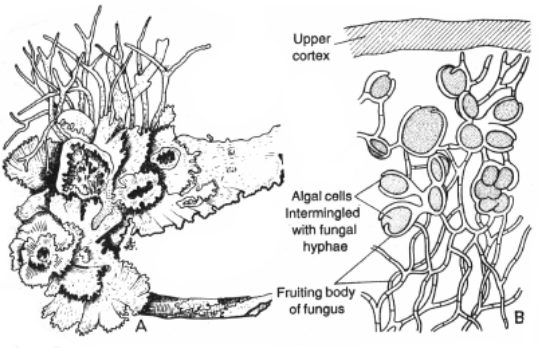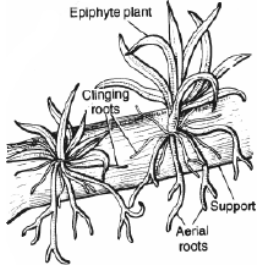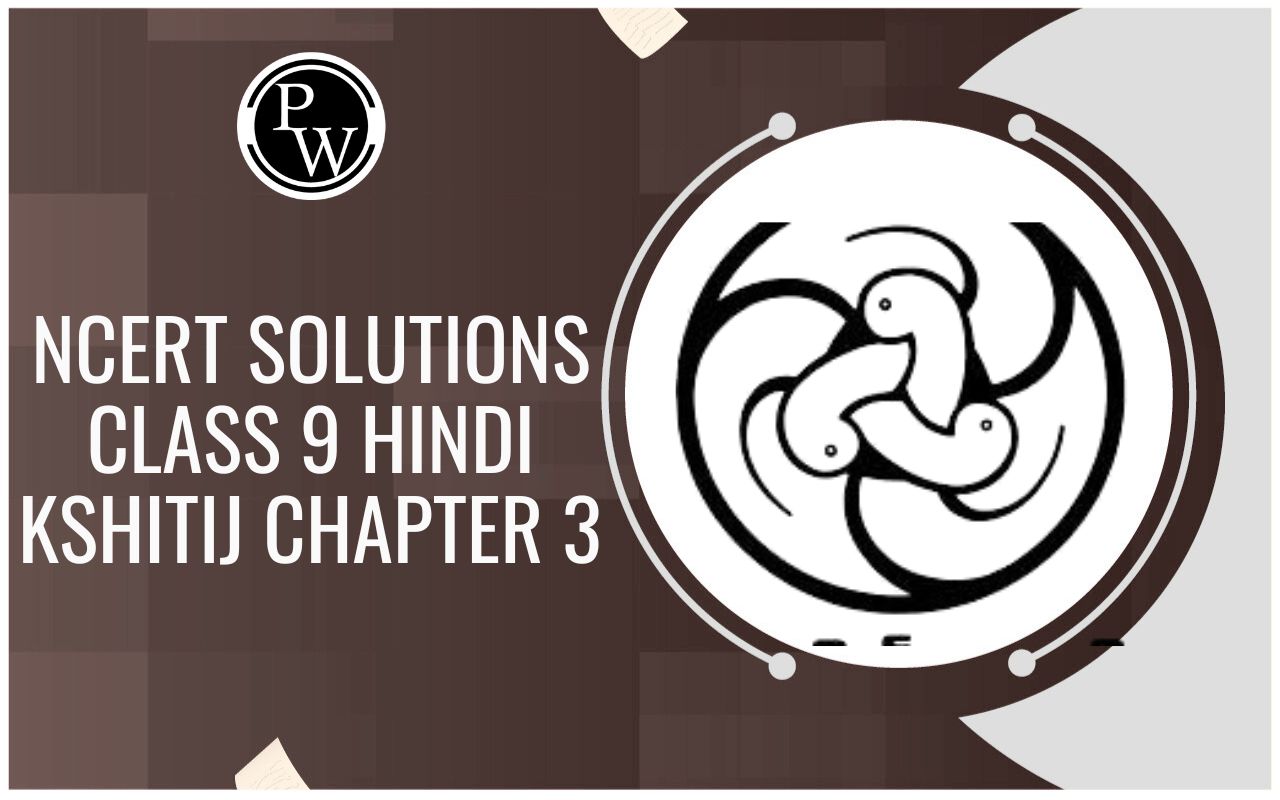
Mutualism
Organisms And Their Environment of Class 12
Mutualism may be obligatory or facultative and symbiotic or non-symbiotic in nature. This is a type of permanent association involving physiological interdependence. It is an interspecific relationship in which benefits clearly exceed cost for each of the species involved. Mutualism is an exceedingly a widespread phenomenon in which one can observe association in between two types of microorganisms, microorganisms and higher plants and animals and so on. In all such associations, both partners derive some benefit from living together.
Effect of mutualism on population or community structure and composition has not yet been fully worked out. However, it has some effect over population growth, though by no means in all cases. Importance of mutualism in terrestrial community is great as compared to the aquatic community.
Mutualism may be
- symbiotic
- non-symbiotic
In symbiotic mutualism, one organism supplies energy to the other in the form of complex organic form in semidigested form for final digestion, e.g., Microflora of human intestine which digests undigested food materials, especially the cellulose, and provide vitamins and free amino acids to the host. Similarly, symbiotic nitrogen fixation occurs in root nodules of leguminous crops by different species of Rhizobia or by Nostoc and Anabaena in coralloid roots of Cycas.
Non-symbiotic mutualism is best seen between the pollinators and angiospermic plants and in dispersal or fruits and seeds by animals including birds and mammals. In such type of association, the two species remain physically unconnected. Some plants are specific to their pollinators and thus their existence is based upon the availability of pollinators (e.g., Yucca). In such cases, mutualism has played a significant role in the organization of communities of some specific sets of flowering plants whose colonization and dominance depend directly on the availability of their pollinators and dispersers. Some indirect type of mutualism has also been observed as myrmecochory (ants mediated dispersal of seeds in many plants) and myrmecophily (mutualism between ants and leaves of Acacia sphaerocephala where ants protect the plants from enemies and in return plant provides food and shelter to ants.
SOME OF THE COMMON EXAMPLES OF MUTUALISM MUTUALISM BETWEEN ALGAE AND FUNGI
Lichens represent in unique example of mutualism between algae and fungi. In these plants algae (phycobionts) and fungi (mycobionts) live together in such a way that they appear as one organism.
In lichens, the nutrition is algae like and reproduction is fungi like and both the partners are benefiting one another. They represent an obligatory and permanent partnership. The algal partner synthesizes food by its photosynthetic ability for itself and for fungal partner, whereas, the fungal partner performs the act of reproduction. The meshes of fungal mycelia support the algae and also hold rain water like sponge. Fungal partner also contribute their nitrogenous wastes and respiratory carbon dioxide to its algal partner for continuous photosynthesis and food production.
Lichens are pioneer of xerosere as they are capable of growing even on barren rock surface where nutrition and moisture are available in negligible amount.

Fig. : Symbiotic plants (Lichens) : A. A lichen growing on a branch of tree, B. A lichen thallus in T.S.
MUTUALISM BETWEEN ALGAE AND HIGHER PLANTS
Nostoc and Anabaena are nitrogen fixing, free-living, autotrophic blue-green algae which usually occur in water-logged paddy fields. They often develop symbiosis or mutualism with higher plants. In Cycas coralloid roots, endophytic Nostocor Anabaena colonies develop in middle cortical zone.
MUTUALISM BETWEEN BACTERIA AND ROOTS OF LEGUMES AND NON-LEGUMES
In roots of legumes, viz., pea, grams, soyabeans, groundnuts, arhar, mung, or urd, symbiotic nitrogen fixing Rhizobia occur forming root nodules. Rhizobium is a non-spore forming, nonmotile and saprophytic Bacillus bacterium which is capable of growing in soil on decaying organic matter as well as in root nodules or legumes. It enters into root through delicate root hairs, colonizes in cortex, synthesises leg-haemoglobin pigments to fix atmospheric nitrogen for itself and for its host. The host plant provides shelter and nutrition to Rhizobium and Rhizobium provides usable form of nitrogen (fixed nitrogen)to legumes for their proper growth and development.
Nitrogen fixing symbiotic bacteria are also found associated with non-leguminous plants such as Alnus, Casuarina or Myrica. They belong to actinomycetes. In leaf nodules of Pyschortia and Pavetta, Klebsiella develops mutualism and carry out nitrogen fixation.
MUTUALISM BETWEEN FUNGI AND HIGHER PLANTS (Mycorrhizal association)
Mycorrhiza is a fungal association with roots of higher plants showing mutualism. In many natural vegetation, plants become infested with mycorrhizal fungi. The fungal mycelia occur on the surface of roots (as in case of Pinus rootlets or oak roots), from ectophytic mycorrhiza but when they occur inside the roots i.e. in cortex or epiblema, (as in some members of Ericaceae), they form endophytic mycorrhiza.
In mycorrhizal association, fungal mycelia derive nutrition from the host (roots of the higher plants) and in turn, the hyphae substitute for root hairs of the host thus helping in efficient absorption of moisture and minerals from humid atmosphere or upper moist stratum of soil.
COMMENSALISM
In commensalism, only one partner (i.e. commensal) is benefitted but neither is harmed. This relationship may be either permanent or temporary. A commensal may grow on the body of its associate or may live even within its body. Two types of commensalism are usually seen, commensalism with continuous contact and commensalism without continuous contact or with casual contact.

Fig. : An orchid
Epiphytic plants are considered as commensals of plant kingdom. They grow on other plants but do not derive food from the support. They are thus space parasites on the support plants. Lichens and orchids are the classical examples of epiphytes. Epiphytes are most common in moist tropical evergreen forests or tropical rain forests where moisture is abundant in surrounding air. Orchids develop two types of roots viz., clinging roots for attachment and hanging hygroscopic roots with velamen for moisture absorption. Lichens develop adhesive rhizoid (rhizines) for attachment on suitable substratum (on the decaying barks of old trees).
Epiphytes are found in mosses, liverworts, lycopods and angiosperms. Diatoms and many more algae in freshwaters and marine habitat exhibits epiphytic nature. Epizoans are also commensals. Cladophora grow on the shells of snails. Some plants (bacteria) grow as commensal in the intestinal tract of animals including man. Escherichia coli is found in human colon.
Lianas are perennial woody climbers rooted in soil but by taking the support of a tree or shrub, they grow upward to get better light. They are commonly found in moist tropical rain forests where dense growth of trees do not permit light to reach to ground level in sufficient amount. Lianas do not derive food from the support and do not establish any physiological contact, upon which they grow. Bauhinia, Ficus, Vitis, Tinospora, Gnetum, etc. develop such habit.
Several commensals make casual contact with other organisms. Snakes, tree frogs, squirrels, birds and insects etc., use trees, shrubs and marsh plants for shelter and breeding. Sometimes the birds and rodents live in the nests and burrows respectively made by other animals.
Sponges support rich fauna within their spongocoel. Treponema macrodentium which sometimes occurs in the mouth of man is another example. Some commensals as oyster crab (Pinnothers ostreum) occurs as casual commensal in mental cavity of oyster.
The sucker fish (Eicheneis) is also a temporary commensal of sharks. They modify their dorsal fin into a hold fast like device which help them in firm attachment to the underside of shark and thereby secure scrap of food, wide geographical dispersal and protection, free of cost. The shark neither benefits nor suffers significantly. Commensalism in general is always facultative.









